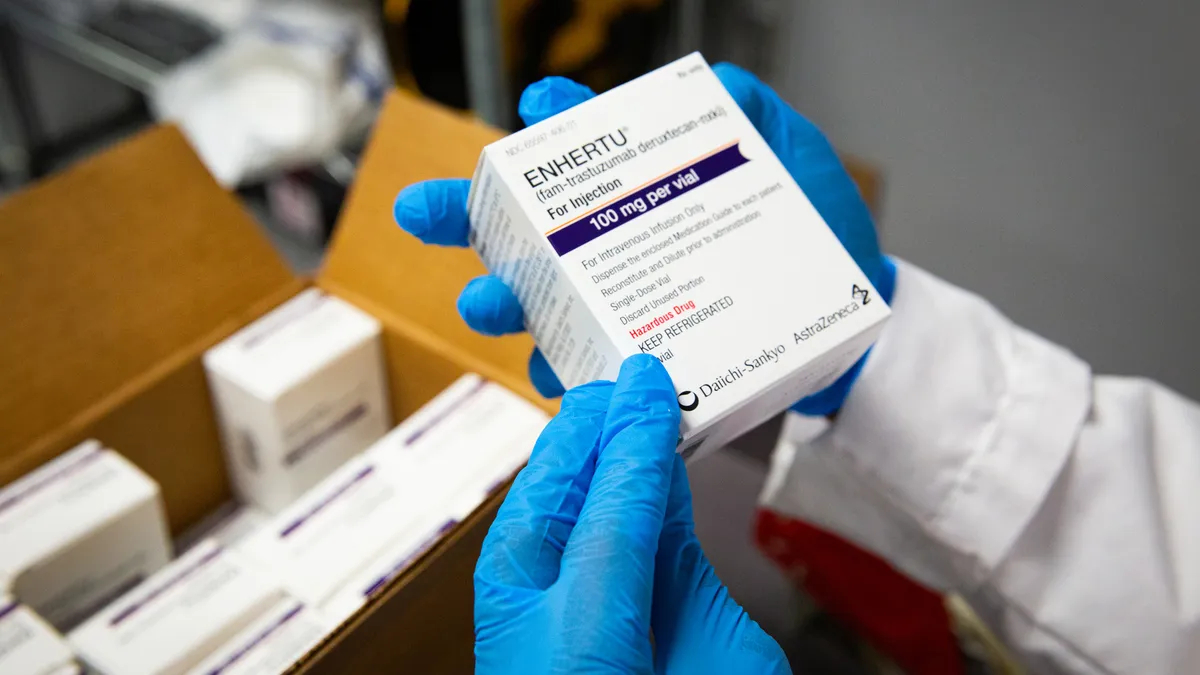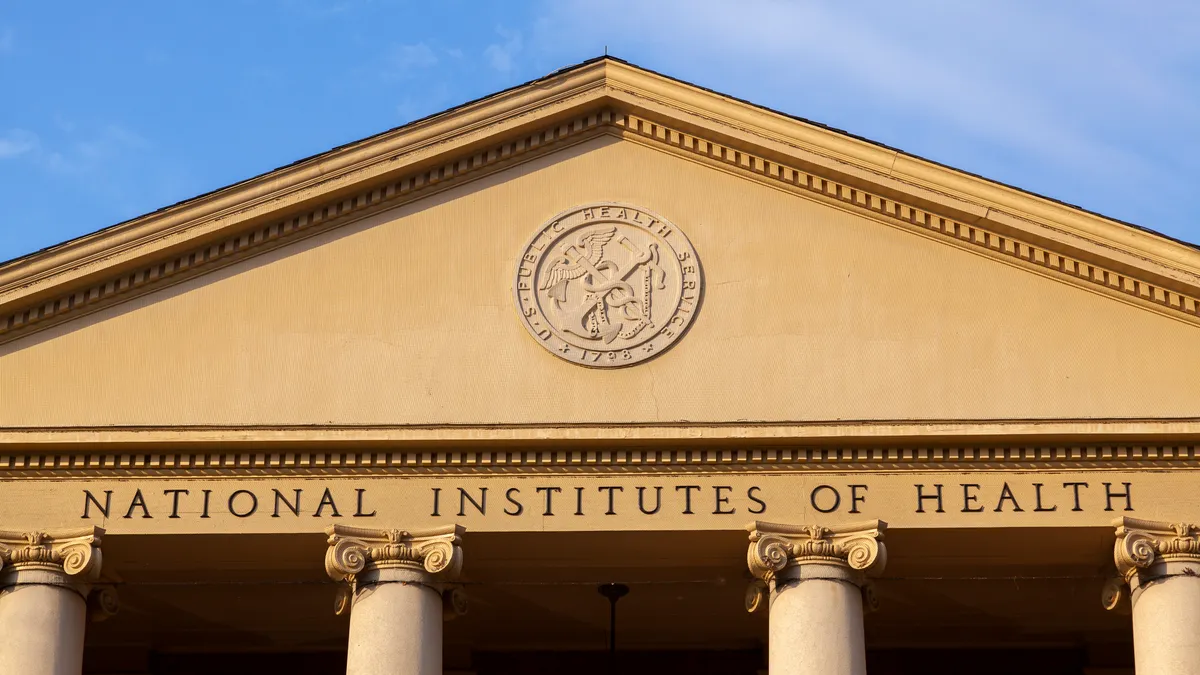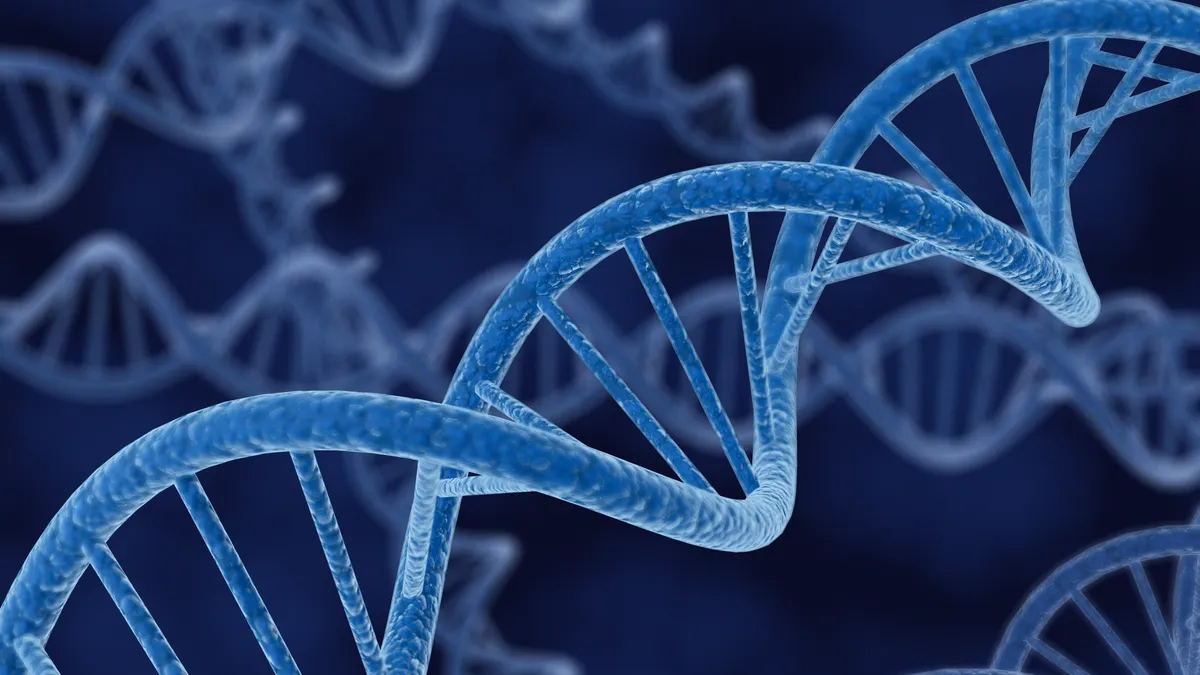Antibody-drug conjugates were the topic du jour at this year’s annual meeting of the American Society of Clinical Oncology that wrapped earlier this week, and the rising trend in cancer care has many in the industry champing at the bit for a piece of the action.
It wasn’t always a sure bet that ADCs would break through the noise, though. The first one approved by the FDA — Mylotarg from Pfizer subsidiary Wyeth for acute leukemia — came to market in 2000. The company voluntarily withdrew the treatment 10 years later due to high liver toxicity, but the concept was strong.
A cancer-killing drug with an antibody homing device attached has the potential to target specific tumors and keep dosing to a healthier minimum.
“It’s essentially smart chemo,” said Ethan Smith, therapy area director for oncology at Norstella.
Despite a rough start, researchers have been tearing down the walls in subsequent generations of ADCs. Now, 15 different molecules have been approved by the FDA. The latest, Emrelis from AbbVie, represents a distinct approach to non-small cell lung cancer by targeting the biomarker c-Met.
The scientific and market success of flagship ADCs like Daiichi Sankyo and AstraZeneca’s groundbreaking breast, gastric and lung cancer drug Enhertu is paving the way for the modality to move into earlier lines of therapy for patients, as well as the next generation of targeted cancer medicines.
Being the ‘flag carrier’
While drugmakers have overcome some of the early safety challenges of ADCs, getting the formula to the right balance of cancer-killing effectiveness without dangerous side effects is still tricky.
“One of the biggest challenges of ADCs that hasn’t really gone away is engineering them — you’ve got your [monoclonal antibody], your linker and your payload, and making sure they all work in tandem has been difficult,” Smith said. “It’s only been around the last five years where many of these challenges have been resolved.”
Getting the drug-to-antibody ratio correct and a stabilized linker to deliver a potent payload without too many off-target effects has been the goal for drug developers. And the established target of HER2, present in about one in five instances of breast cancer, helped make Enhertu an important entry, Smith said.
“For most analysts, Enhertu has the highest forecasted revenues and is the one breaking a lot of ground, particularly across breast cancer in nearly every setting,” Smith said. “It is a flag carrier of ADCs.”
One of the compelling aspects of ADCs is you can rechallenge a target, Smith said. For example, a patient taking Roche’s monoclonal antibody Herceptin for a HER2-positive tumor can follow up with Enhertu afterward without encountering resistance to the target — only resistance to the payload, which is another hurdle moving forward.
“The proof in these trends is always the data, but companies can’t wait that long — the later someone is to a licensing deal, the more they have to pay."

Ethan Smith
Therapy area director for oncology, Norstella
Enhertu is also proving its worth in earlier stages of care. At ASCO, one of the most talked-about studies was a late-stage trial in which the treatment outperformed chemotherapy as a first-line drug.
Smith called it potentially “practice changing.”
Daiichi Sankyo is now seeking approvals in these earlier-disease positions, Ken Keller, head of the company’s global oncology business unit, said during a PharmaVoice and BioPharma Dive event yesterday.
“As successful as Enhertu has been so far, the story is still evolving,” Keller said. “Most of our indications early on were in late-stage disease patients who had failed many lines of therapy — we’re at the point in its life now where we have top-line readouts for a number of different studies that are moving Enhertu earlier and earlier in the treatment paradigm.”
And like many roads in oncology, Enhertu’s leads to tie-ups with other successful cancer treatments to squeeze as much utility out of the molecule as possible.
“As we move earlier, almost all of our trials will be in combination with different [immuno-oncology] drugs and … even chemotherapy drugs,” Keller said. “As you move forward, the opportunity to leverage different [mechanisms of action], especially ADCs and IO therapies, that’s going to deliver the best outcomes for patients.”
Pfizer rising
This year’s ASCO meeting has had the biggest ADC showing to date, which has been growing year by year, Smith said.
“Back when ADCs first came into play, that was before we had a lot of the validated targets we have today,” Smith said. “HER2 has been around for a long time and remains an established target, but now we’re seeing much bigger development in the payloads themselves for a next generation of ADCs.”
For example, Pfizer, which acquired early ADC innovator Seagen in 2023, is going after a familiar target in the oncology arena: the PD-(L)1 pathway. Checkpoint inhibitors like Merck & Co.’s Keytruda and Bristol Myers Squibb’s Opdivo, among many others, have blocked the pathway in an immuno-oncology setting, and Pfizer is betting the same tracking mechanism can help an ADC shine.
Pfizer has also teamed up with biotech Summit Therapeutics to combine ADCs with bispecific antibodies in early-stage development.
“There’s not much detail on it, but if that’s something that’s successful, they could be riding not just an ADC wave but the PD-(L)1 and VEGF wave with Summit,” Smith said. “That’s something to look out for.”
Gilead’s Trodelvy also turned heads at ASCO with a study in first-line triple-negative breast cancer along with Keytruda. Providing a chemo-free treatment as a first option for patients would address a highly unmet-need population, Smith said.
Leading a trend
Being an early adopter of an oncology trend like ADCs isn’t always an easy feat to pull off for drugmakers. While data is king, getting a foot in the door requires a first step into the unknown, Smith said.
“The proof in these trends is always the data, but companies can’t wait that long — the later someone is to a licensing deal, the more they have to pay,” Smith said. “In truth, a lot of these licensing deals happen on faith, and perhaps some desperation.”
And the industry doesn’t always move on the right trends. A rush on Lag3 blockades, for instance, brought on the approval of Bristol Myers Squibb’s melanoma drug Opdualag in 2022, but a series of trial failures and axed programs from pharma giants like Merck and Roche left a sour taste.
Even though it takes faith to enter the arena, data will still always be the true test of a modality’s lasting power, Smith said.
“A trend is only confirmed when you’ve got that threshold of data — even if you see a bunch of companies licensing a new technology, that doesn’t validate it,” Smith said. “Perhaps it’s just pessimism, but until you have that validated data, it’s best to stay away from the noise of licensing activity.”
ADCs are beginning to cross that threshold, he said. Between established leaders and a slate of novel targets on the way, some hurdles remain, but the trend is shaping up to be a game changer.




















